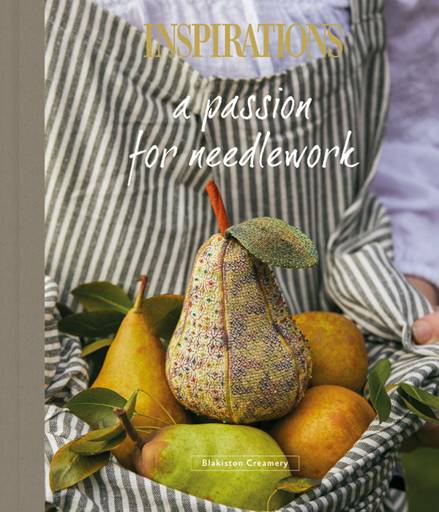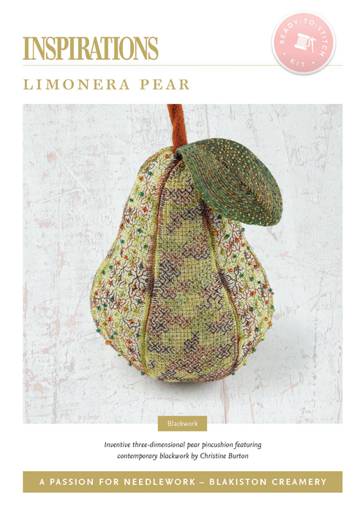Limonera Pear by Christine Burton
16TH APRIL 2021 - ASU #278
A pincushion forms a part of almost everyone’s needlework kit. It is an essential place to store pins and can be a very handy location to park one’s needle between threads or stitching sessions.
Pincushions come in all shapes and sizes, from tiny, handsewn pillows through to magnetic dishes which, although technically not a ‘pincushion’ per se, serve the same useful purpose.
There is real satisfaction that arises from making one’s own pincushion and there are a plethora of different designs and styles we can choose from

Pincushions have been in use since the Middle Ages, and have been variously filled with cotton, horsehair or sawdust, sometimes weighted, sometimes embroidered, appearing in shapes as varied as a tomato, a doll’s dress or a padded cushion on the head of a bird.

In Victorian times, it seems that fruit and vegetable shaped pincushions were very fashionable. Limonera Pear by Christine Burton, featured in A Passion for Needlework | Blakiston Creamery, continues that tradition.

We’ll be the first to admit that when we initially saw this stunning project, we couldn’t believe that it was a pincushion. But the clever construction and three-dimensional appearance means that it is the perfect receptacle for pins and a gorgeous addition to any embroidery kit.

What sets Limonera Pear apart is the stunning embroidery adorning the outside. Christine Burton is known for her modern and beautiful blackwork designs. In this piece she has chosen five traditional diaper patterns, one for each of the pear’s panels. However, rather than working them in black thread as would be traditional, she has utilised a gorgeous, autumnal variegated thread.

She’s then added extra sparkle with the addition of glass beads and finally topped the entire masterpiece with a sparkling, three-dimensional leaf worked with metal thread and couching stitches.

Although blackwork can be worked using double running stitch or backstitch, because of the nature of the thread, this project does not lend itself to double running stitch. The blackwork needs to be completed using a combination of running and back stitch to ensure that the subtle gradations of colour turn out.
Due to the nature of variegated thread, it is important to try to maintain the integrity of each colour block by completing the stitches as you go.
Of course, the actual path that you take as you work the pattern is entirely up to you. This is one of the beauties of blackwork – there are no set-in-stone rules as to how you complete the stitches. As long as you achieve the pattern and the colours flow evenly from one to the next, you are doing the right thing. This project is worked using counted back stitch on a fine 32-ct linen, so counting your threads is important to ensure that the pattern turns out evenly.

Once you have completed the stitching, you then get the pleasure of constructing the fruit. Clear instructions are provided, however ensuring that it is adequately stuffed will mean that its role as a pincushion will be assured. Although, you may simply choose to show case your finished pear by lying it gently in a fruit bowl for everyone to admire.

Whether your pear is destined for a practical or purely ornamental life, the project Limonera Pear will offer both challenge and enjoyment in equal measure.
Make Your Own Limonera Pear

Step 1 – Purchase Project Instructions
Limonera Pear by Christine Burton from the book A Passion for Needlework | Blakiston Creamery is an inventive three-dimensional pear pincushion featuring contemporary blackwork.

Printed Book
A Passion for Needlework 3 | Blakiston Creamery
Shop NowStep 2 – Purchase Ready-To-Stitch Kit
The Inspirations Ready-To-Stitch kit for Limonera Pear includes everything* you need to re-create this enchanting pincushion: Fabrics (unprinted), wool felt, embroidery threads, beads and needles.

Kit
Limonera Pear - APFN3 Kit
Shop Now*Please Note: To cater for flexibility of purchase, instructions are not included with our kits. For step-by-step directions on how to create this project, please refer to the book.
